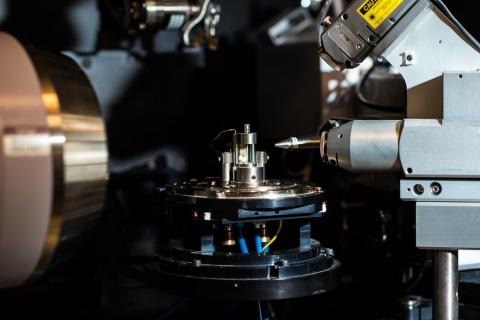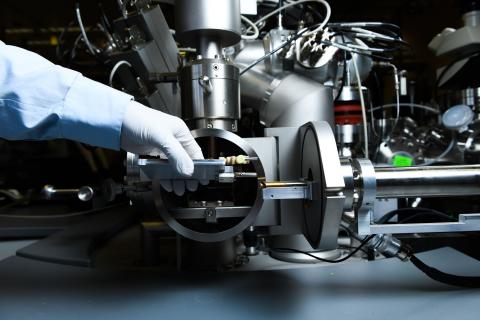Today, the most common methods used for medical device sterilisation are by gaseous ethylene oxide and by electron beam or gamma irradiation. With X-ray sterilisation about to enter the market, its material compatibility needs to be assessed at doses typically encountered during a sterilisation...
Filter results
Category
- (-) Materials Science (4)
- (-) Chemistry (1)
- (-) Plant Science (1)
- Scientific Discovery (28)
- Biology (25)
- Earth System Science (22)
- Integrative Omics (9)
- Microbiome Science (9)
- Human Health (6)
- Chemical & Biological Signatures Science (1)
- Computational Research (1)
- Ecosystem Science (1)
- National Security (1)
- Weapons of Mass Effect (1)
Content type
Tags
- (-) Omics (3)
- (-) Polymer Materials (2)
- (-) X-Ray Diffraction (1)
- Mass Spectrometry (4)
- Imaging (2)
- PerCon SFA (2)
- Spectroscopy (2)
- Activity-Based Protein Profiling (1)
- Bacterial Persistence (1)
- Bacterial Signaling (1)
- Bioenergy Production (1)
- Chemical Biology (1)
- Chemical Probes (1)
- Enzymology (1)
- Instrument Development (1)
- Mass Spectrometer (1)
- Metabolic Networks (1)
- metabolomics (1)
- Microbeam (1)
- Microscopy (1)
- Protein Engineering (1)
- Proteomics (1)
- Structures for Lossless Ion Manipulations (1)
- Synthetic Biology (1)
- Synthetic Chemistry (1)
- ToF-SIMS (1)
- Tomography (1)
- XANES (1)
- XRF (1)
The literature on the effects of radiation on the properties of various polymers and composites has been briefly reviewed for the purpose of identifying polymeric materials that could be irradiated to improve their performance. Radiation treatment of polymers may lead to cross-linking or chain...
Category
"Visualizing the Hidden Half: Plant-Microbe Interactions in the Rhizosphere" Plant roots and the associated rhizosphere constitute a dynamic environment that fosters numerous intra- and interkingdom interactions, including metabolite exchange between plants and soil mediated by root exudates and the...
Stanford Synchrotron Radiation Lightsource Experimental Station 14-3b is a bending magnet side station dedicated to X-Ray Imaging and Micro X-Ray Absorption Spectroscopy of biological, biomedical, materials, and geological samples. Station 14-3b is equipped with specialized instrumentation for XRF...
Category
Rigaku Rapid II Microbeam is one of the most versatile micro-diffraction XRD system in materials analysis, using advanced imaging plate technology for measuring diffraction patterns and diffuse scattering from a wide range of materials. The RAPID™ II Curved Detector X-Ray Diffraction (XRD) System's...
Category
The IONTOF TOF.SIMS 5 data source is a time-of-flight secondary ion mass spectrometer and powerful surface analysis tool used to investigate scientific questions in biological, environmental, and energy research. Among the most sensitive of surface analysis tools, it uses a high-vacuum technique...



